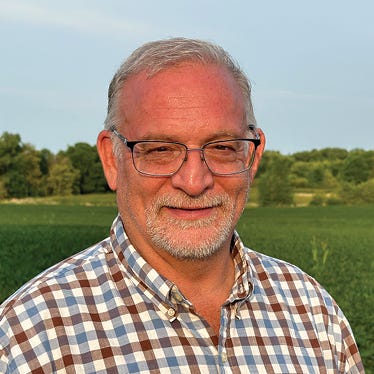May 27, 2021

The last time I had our house shingled, the contractor did not go on the roof to measure and calculate how many shingles to order. He simply pulled out his phone and looked at a satellite image.
It was amazing, and I am sure some would find it a bit concerning.
Satellite technology has been used to estimate planted acreage and evaluate crop progress across regions for quite a while. More recently, efforts are underway to more precisely measure practices associated with environmental efforts, such as tillage intensity and cover crop adoption. Recognizing that there are concerns among farmers about privacy, only broadly aggregated data are currently being made available.
OpTIS
OpTIS (Operational Tillage Information System) is one such effort. Housed at the Conservation Technology Information Center (CTIC), OpTIS is the result of a partnership among CTIC, The Nature Conservancy and Regrow, designed to measure acres on which soil health practices are being implemented using satellite data. Data are currently available for nine states across the Midwest and for the period 2005-18.
Data are available by crop reporting district — which for Minnesota basically involves drawing a tic-tac-toe grid across the state. Considering the six districts where most crop production takes place, I queried the data for two time periods, 2005-09 compared to 2014-18. During this time, OpTIS data show that acres using conservation tillage increased in every district. The increase was largest in south-central Minnesota, growing from 44% to 50%. Note that for the OpTIS program, conservation tillage is defined as having 30% residue cover or more at planting.
This serves as another line of evidence that farmers are working to adopt improved tillage practices as shown in the USDA 2017 Census of Agriculture, which documents an 18% reduction in acres on which intensive tillage practices were used, and a decline in the number of farms using intensive tillage practices — from 32,653 to 22,993.
It is also important to apply some basic agronomic sense to these sources of data. For example, OpTIS defines conservation tillage as 30% cover. Some fields can be defined as conservation tillage one year and not the next, depending on crop rotation.
OpTIS also does not yet show ranges. Are fields not defined as conservation tillage close — say, 25% to 30% residue? Perhaps in the future, a metric could be added to provide average residue across a range of values.
Remote sensing and cover crop use
Another remote sensing project underway involves the Minnesota Board of Water and Soil Resources and the University of Minnesota. This project also uses satellite data to assess such things as cover crop adoption. Recently reported data showed about 300,000 acres of cover crops with significant biomass development in the fall. Ground truthing indicates that the program captures about half of acres planted to cover crops. In other words, the satellite can only detect greenness or biomass, so it is perhaps more accurately described as a measure of successful cover crop acreage.
This tracks with conversations with farmers, suggesting cover crops catch about half the time. Experimentation with cover crops is all the rage right now, so it highly likely that this success rate will increase.
As with reduced tillage, whatever production practices are used have to prove themselves. It is common in many industries that emerging products have to maintain or improve production levels while reducing costs, which also considers environmental factors. Here again, aggregate data suggests that farmers are carefully adopting new practices or tweaking systems appropriately, as yields are being maintained — even increased — at the same time conservation metrics are improving.
Not many industries can make similar claims.
And in related news, global food consumption is about 16 billion pounds per day.
Formo is executive director of the Minnesota Agricultural Water Resource Center.
About the Author(s)
You May Also Like






